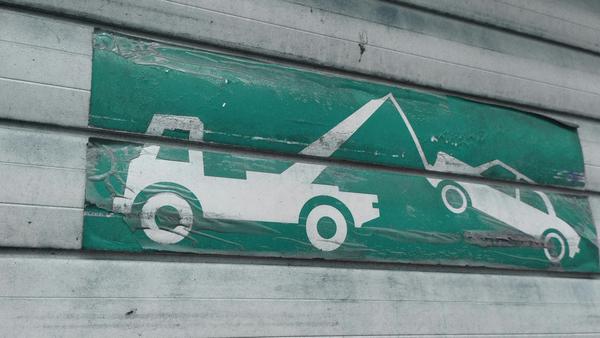
Earlier this year, NFL fans from across the country descended on New Orleans for the Super Bowl. But even as the Big Easy rushed to put its best face forward for the big game and quickly turn the page from a New Year’s Eve attack on its famed tourist district, there was no way of concealing the derelict homes, watermarked buildings and other ravages of Hurricane Katrina. “On the surface, New Orleans is still the New Orleans of our imagination, where there’s Bourbon Street, the French Quarter and you’re drinking in the middle of the day outside,” says the Oscar-nominated director Traci A Curry. “But for the people of this place, the people who know it, there’s New Orleans before Katrina and after Katrina. A lot of us who experienced it as spectators think of it as something that happened to America – and it wasn’t.”
Curry’s solo directorial debut, Hurricane Katrina: Race Against Time, re-examines the epic storm 20 years later. The five-part series, which was made for National Geographic and counts Ryan and Zinzi Coogler and Sev Ohanian as producers, isn’t a requiem in the vein of When the Levees Broke – Spike Lee’s superlative series that was just one of many works that informed this project – Curry says. Rather, it’s a tragedy thriller told through forensic analysis. The biggest jump scares come in the hindsight revelations. The first episode provides a refresher on Hurricane Pam – the multi-agency, worst-case scenario planning exercise that was conducted a year before Katrina and essentially predicted everything that would happen, down to the reports of violence breaking out across the city.
In Race Against Time, the clock runs down quickly while counting down the hours until the storm makes landfall, and then ticks slowly on for days as storm victims and lifesavers wait for “the cavalry to come”. While bingeing the five-hour series, a two-year production effort, I found myself edging from horrified to heartbroken to furious as opportunistic politicking and rashes of misinformation sabotaged rescue efforts time and again. With a mix of home video and archival video footage (Curry is a former cable TV producer), the docuseries confidently stitches together a range of perspectives on the mushrooming calamity – from city leaders to emergency managers to residents who saw their lives and loved ones washed away. “Initially our team combed through the hundreds of hours of archival material, identifying Katrina survivors who we found compelling, in the hopes that we might track them down,” Curry says. “There were quite a few people we were unable to find, and some we found only to realize they had passed away.”
Viewers will be heavily invested in the plight of Shelton Alexander – a spoken word poet who rode out the storm inside the Superdome and recorded the entire experience; a lot of his digicam footage made the final cut. “I was fully equipped, with three batteries charged up,” he says. “It was one of those things where I was like, I don’t know what’s about to happen, but I do know the water is going to come.”
Race Against Time is not a story told from the top down. Former New Orleans mayor Ray Nagin, who was made a scapegoat for the Katrina aftermath, was one high-level authority figure that the production team pursued for the film – but ultimately he declined to be interviewed. Also left out is Kanye West’s George W Bush slam or other impressions from pop culture that might reframe the disaster through that lens. Any digression in that direction, tempting as it surely must have been, probably would have distracted from Race Against Time’s central thesis: that Hurricane Katrina and its aftermath were born from a series of compounding failures, starting with the failure to protect Louisiana’s coastline. Ivor van Heerden, a respected marine scientist who warned the public and government officials about the region’s potential for a devastating hurricane long before Katrina hit, blames the booming oil and gas industry for hollowing out the wooded wetlands that once gave New Orleans some natural cover.
That left the city’s levee system, the slapdash work of the US army corps of engineers, to absorb the brunt of the wind and storm surge. But long before those barriers gave way to river and lake water that wound up submerging 80% of New Orleans, Nagin could have helped himself and so many others by not waiting until the 11th hour to evacuate the city – essentially leaving New Orleans’ many elderly, infirm and poor residents scrambling. And yet: as shockingly bad as Nagin was in the moment, he still has nothing on Mike Brown, the smug face of the inept federal response. In one damning email chain unearthed in the series, it’s revealed that Brown was literally dining out in Baton Rouge while storm victims and first responders went hungry. Worse, Brown had the nerve to relate his frustrations about New Orleans evacuees contributing to long restaurant wait times and local traffic.
Twenty years on, there’s still no forgiving Brown – but Race Against Time does extend a measure of grace to some Katrina crisis managers. Police superintendent Eddie Compass certainly didn’t help the situation by telling the media that snipers were shooting at rescue helicopters. But even that huge blunder becomes somewhat easier to appreciate once you see Compass himself as storm victim who was only reacting to the game of telephone that disrupted the information chain when the storm knocked out power throughout the city. “One of the things I said to the team early on is that we really want to make sure we approach everyone as a human being in the series,” Curry says. “By the time we get to episode four, there’s a lot of state abuse of force and violence against citizens.”
Curry also goes to lengths to show how the Katrina narrative became perverted. Many TV news outlets covered the fallout from Bourbon Street and waited dutifully for the scenes to snap into focus. When their cameras picked up on people breaking into stores for food, clothes and other supplies, Katrina went from being a human story about an unfathomable crisis on American soil to an excuse for Brown and right-leaning commentators to scold Black New Orleanians for looting businesses and damaging property.
Desperation that seemed so palpable to those watching from afar was somehow lost on the actual news gatherers who should know it when they see it. “There’s a clip I think in episode four that I remember watching in real time of Wolf Blitzer as images of masses of Black people [are on screen] and he goes, ‘They’re so poor. They’re so Black.’ And yes, there were a lot of poor, Black people – but it just felt so dehumanizing and just deindividuated Black suffering. I really wanted to dismantle that, like, no, these are individuals with a life, with a story, with family, with feelings, who experienced a loss.”
Race Against Time doesn’t turn away from strong imagery. There are shots of lifeless bodies and talk of dying babies, but none of it is ever offered up for entertainment’s sake – hardly a given in the documentary game these days. “NatGeo was mindful that staying through five episodes can be a big ask for viewers,” Curry says. ”But overall they were very supportive of my intention to tell the story in a way that did not feel exploitative of the Katrina survivors or sensationalize the story in any way.”
Eerily, the clock doesn’t stop running once Race Against Time is through. The final episode is careful to point out the welter of climate crises that have continued to strike the US since Katrina’s passing, and even includes footage from the recent Los Angeles wildfires taken by a producer who lost her home. Each disaster is a reminder of not only how ill-prepared we are for such events, still, but also of how hesitant we remain to reckon with the root causes that are only going to make future weather catastrophes that much more devastating – especially in Black and low-income communities, which are still suffering in the aftermath of Katrina.
“I hope this series makes us realize the urgency of recognizing that these things are going to continue to happen,” Curry says. “I know this is sort of a dirty word these days, but we need to think about equity in the way we approach preparation for disasters. Because if we center the needs of the most vulnerable people, it’s going to help everybody.”
Hurricane Katrina: Race Against Time premieres on 27 July on National Geographic and will be available on Disney+ and Hulu afterward
• This article was amended on 28 July 2025 to correct the name of one of the film’s producers. He is Sev Ohanian, not Alexis Ohanian as stated in an earlier version.







